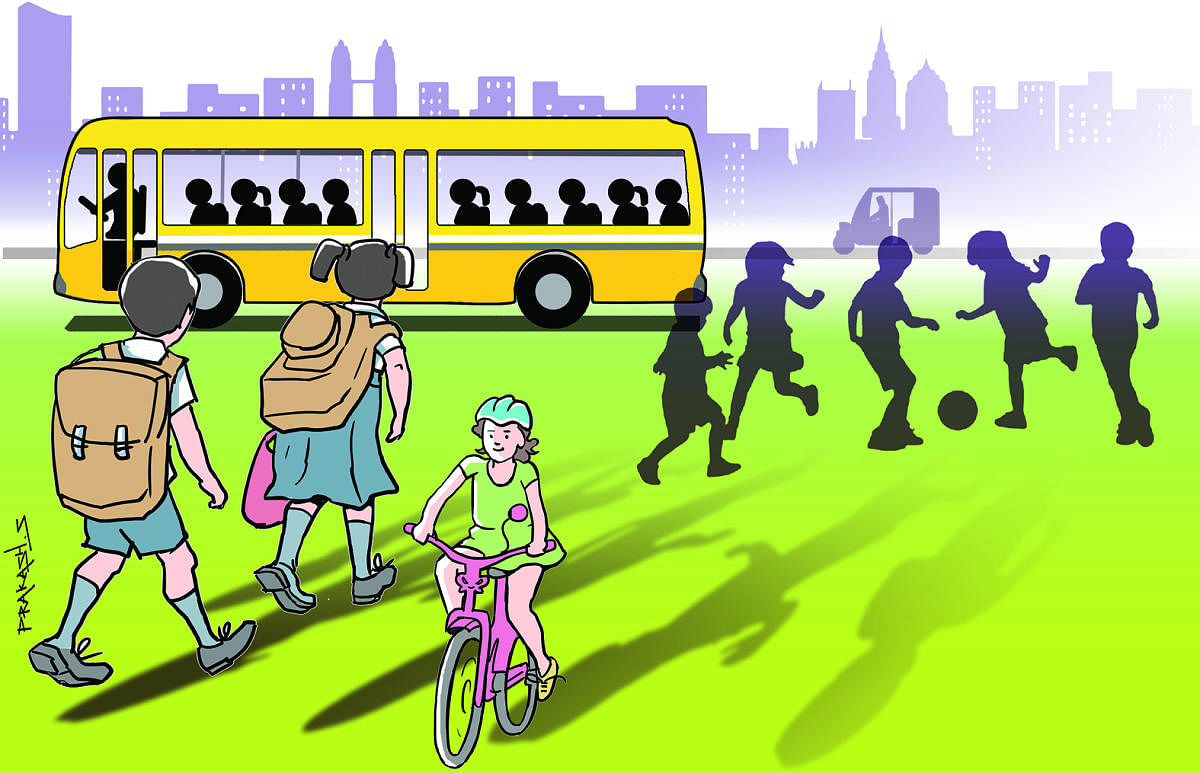

The term ‘Child-Friendly City’ (CFC), as defined by the United Nations Children’s Fund (Unicef), refers to a system of local governance committed to fulfilling the rights of the child. A CFC is a city or community where children’s voices, needs, and rights are integrated into laws, policies, regulations, programmes, and budgets.
Children form a huge component of our population, a voice that currently seems to be missing in several decision-making processes. The share of Karnataka’s adolescent population, based on the 2011 Census data, stood at 18.9%. From the onset of the pandemic, this part of our population has been effectively restricted to the confines of their homes for over six months.
Decision-makers
One of the main benefits that would manifest by taking their voice into decision-making would be in creating thriving cities for not only the current generation but for future generations to come. Unlike the national or the state level, participation at the city and the local level influences their quality of life on a daily basis.
Imagine you are a 12-year-old who wants to go to a park with a friend who lives about 2 kms away. Are our pedestrians’ pathways walkable for the child to go all the way to the park? Alternatively, do they have enough options for public transport?
If they want to cycle, do they have designated cycling lanes? Are the zebra crossings clearly marked out? Is the air clean to breathe? Do we have enough streetlights to ensure their safety? Is the park or playground hygienic, clean, and catering to all needs of the child? Do they have a public library to go and read a book?
Voices of future
Several decisions on development are made with the future generation in mind. But are we taking into account the voices that matter? The voices that are the future?
Recognising this need, Unicef had launched the Child-Friendly Cities Initiative (CFCI) to respond to the challenge of realising the rights of children in an increasingly urbanised set up. It stressed the need for children to express their opinions and influence decisions that affect them while also participating actively in their community.
Around the world, there have been incredible success stories on how such a voice in decision-making can boost sustainable development. In Barcelona, multiple stakeholders - the district administration, architects and local schools – came together to conduct workshops with children to get their perspectives through various activities involving play and other experiments in public spaces.
Mapping communities
‘Map My Community’, an app designed by children and young people from Delhi, was launched and supported by the University of Birmingham. Its objective was clear: To initiate change in the communities by collecting data and identifying the basic needs of children.
In the city of Ghent, Belgium, a child, and youth-friendly city action plan was released with 182 commitments. A children’s secretary was appointed to involve youth movements, civil society, and citizens to work together and activate the plan.
Children in ward panels
Incorporation of these voices as an integral part of our city’s development is pertinent now more than ever. Ward Committee meetings that see dedicated attendance by engaged, attentive senior citizens should have children participating on their needs and grievances.
Children should have a say on what their budgets comprise – is there a need for new equipment in the local park? Are there enough places to dispose of chocolate wrappers? Janaagraha attempted this by seeking inputs from over 6,000 children across the city on what they would like to see in their local community and the results were astounding.
Children not only mentioned that they needed more parks and playgrounds but also spoke of spaces where they can draw graffiti, showcasing the richness of Bengaluru. They echoed the thoughts of several citizens that the city can no longer handle traffic jams and needs more Metros and public transport that helps bring it down.
Youth committees
Just as the Bruhath Bengaluru Mahanagara Palike (BBMP) has several standing committees, is it time for a committee comprising youth who express their needs and wants for their city?
Children are integral to the fabric of our communities. There is an ever-increasing need for us to engage them in all aspects of decision-making by providing them platforms for participation –platforms for them to report grievances, to work on issues with their local governance, to experience change and to participate.
Universal Adult Suffrage provides all adult citizens the opportunity to participate in democracy. So children may not yet have voting rights. But they probably should, to create a brighter, smarter Bengaluru.
(The author is Head, Civic Learning, at Janaagraha Centre for Citizenship & Democracy)